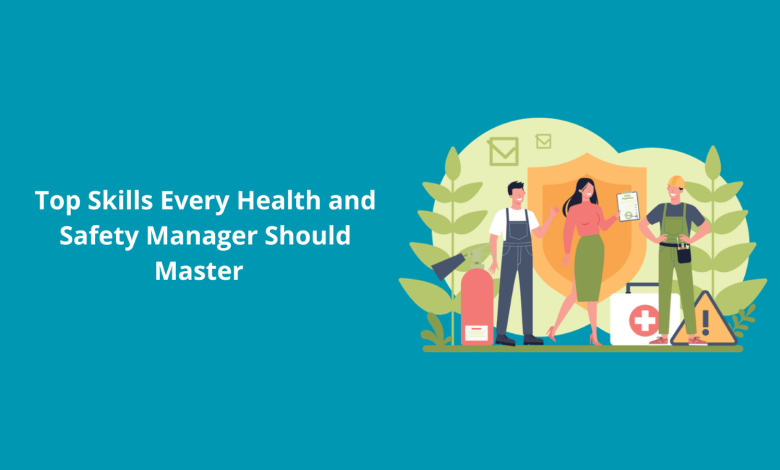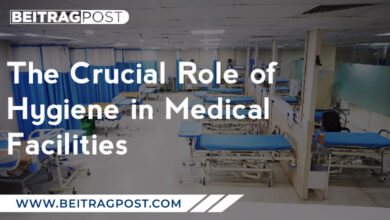Top Skills Every Health and Safety Manager Should Master

A Health and Safety Manager are responsible for essential. These experts are charged with establishing and maintaining a safe working environment for staff members while ensuring rules are followed. The ability to master a variety of talents is crucial for success in this position. This blog explores the essential competencies any health and safety management needs to strive for, as well as the value of IOSH Training in developing those competencies.
Table of contents
- Risk Assessment and Management
- Effective Communication
- Leadership and Team Management
- Knowledge of Regulations and Standards
- Problem-Solving Aptitude
- Data Analysis and Interpretation
- Attention to Detail
- Adaptability and Continuous Learning
- Crisis Management
- Empathy and Sensitivity
- Conclusion
Risk Assessment and Management
An essential competency for every manager of health and safety is the capacity to conduct thorough risk analyses. This entails locating possible risks, assessing their seriousness, and putting precautions in place. Creating a safe workplace requires foreseeing possible risks before they materialise. A sharp eye for detail and a thorough awareness of workplace dynamics are prerequisites for this expertise.
Effective Communication
To make sure that safety procedures are understood and implemented by all personnel, clear communication is essential. Health and safety managers need to be skilled in explaining complicated information in a way that is simple to understand. Additionally, they must be friendly so staff members feel free to bring up safety issues. This ability is especially crucial in times of crisis when the distribution of precise information might save lives.
Leadership and Team Management
One of the main responsibilities of a health and safety manager is to lead by example and motivate their teams to make safety a top priority. Successful leadership is necessary to create a culture that prioritises safety. Managers should encourage their staff to adopt safety procedures as a natural part of their daily job activities rather than as a duty. This ability also includes organising training sessions, and drills and ensuring that every staff knows safety procedures.
Knowledge of Regulations and Standards
Health and safety managers must possess the essential skill of staying up-to-date with ever-changing laws and industry standards. Adhering to regional and global regulations is crucial to ensuring ethical and truthful business practices while minimising risks. IOSH Training is an invaluable resource in this regard. Organisations such as the Institution of Occupational Safety and Health (IOSH) provide tailored training to equip managers with the latest information and industry best practices.
Problem-Solving Aptitude
In health and safety, unforeseen difficulties are certain to appear. To handle problems quickly and come up with workable solutions, managers need to have good problem-solving abilities. Health and safety managers must be able to think quickly to discover new hazards, modify safety procedures to fit a shifting workplace or handle unexpected situations.
Data Analysis and Interpretation
Data-driven management of health and safety is becoming more prevalent. Managers must be adept at gathering and analysing information on accidents, near-accidents, and safety trends. They can improve workplace safety by proactively identifying patterns, fixing reoccurring problems, and making judgements by interpreting this information.
Attention to Detail
Particularly regarding safety, the devil frequently lies in the details. To guarantee that no possible threat goes missed, health and safety managers must naturally pay attention to detail. Missing little details might result in serious safety violations, making this ability crucial to their job.
Adaptability and Continuous Learning
New dangers and difficulties always arise in the world of health and safety. Managers need to be flexible and eager to learn. Managers may remain ahead of the curve by being updated about the most recent developments in safety practices, thanks to IOSH training and other professional development options.
Crisis Management
Nobody plans for emergencies, but managers of health and safety must be equipped to deal with them successfully. A well-thought-out crisis management strategy is essential, whether it involves a workplace tragedy, a natural disaster, or a health pandemic. Managers need to be adept in organising response activities, interacting with stakeholders, and reducing possible harm.
Empathy and Sensitivity
Managers of health and safety frequently deal with people who are aware of and knowledgeable about safety procedures to varied degrees. A good working connection between managers and employees is fostered by showing empathy and consideration for their problems. This strategy promotes collaboration and open communication in order to keep the workplace safe.
Conclusion
Success in health and safety management involves more than just following the law. It needs a comprehensive strategy that combines technical expertise, leadership potential, and a sincere dedication to employee welfare. The mastery of these abilities and ongoing education from sources like IOSH Training enable health and safety managers to successfully negotiate the ever-changing workplace safety environment. These experts play a crucial role in developing a workplace where people may prosper without sacrificing their welfare by honing these talents.
check more : Tutor Hunt




